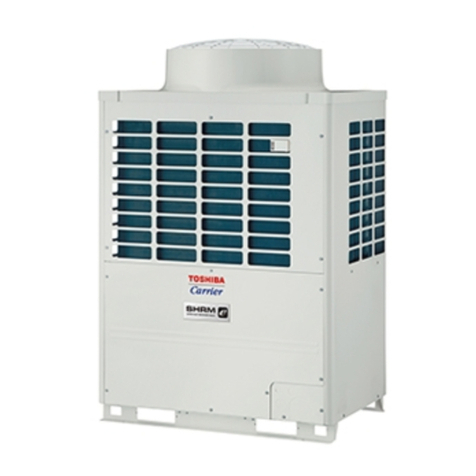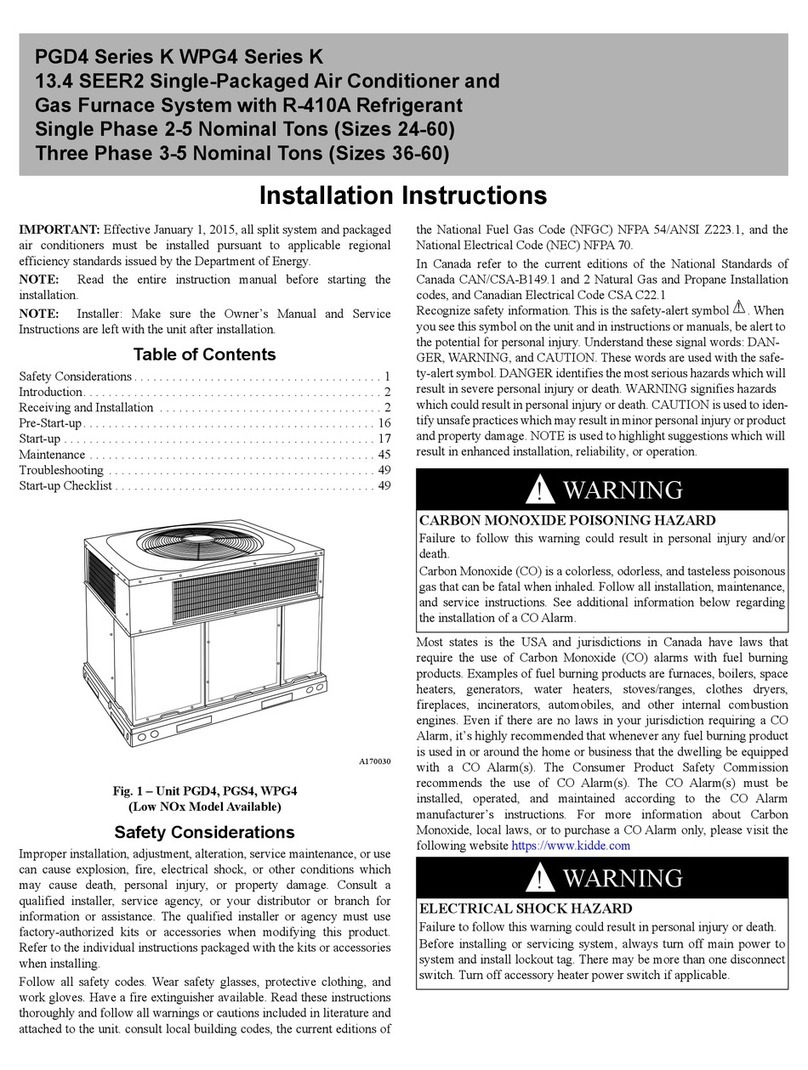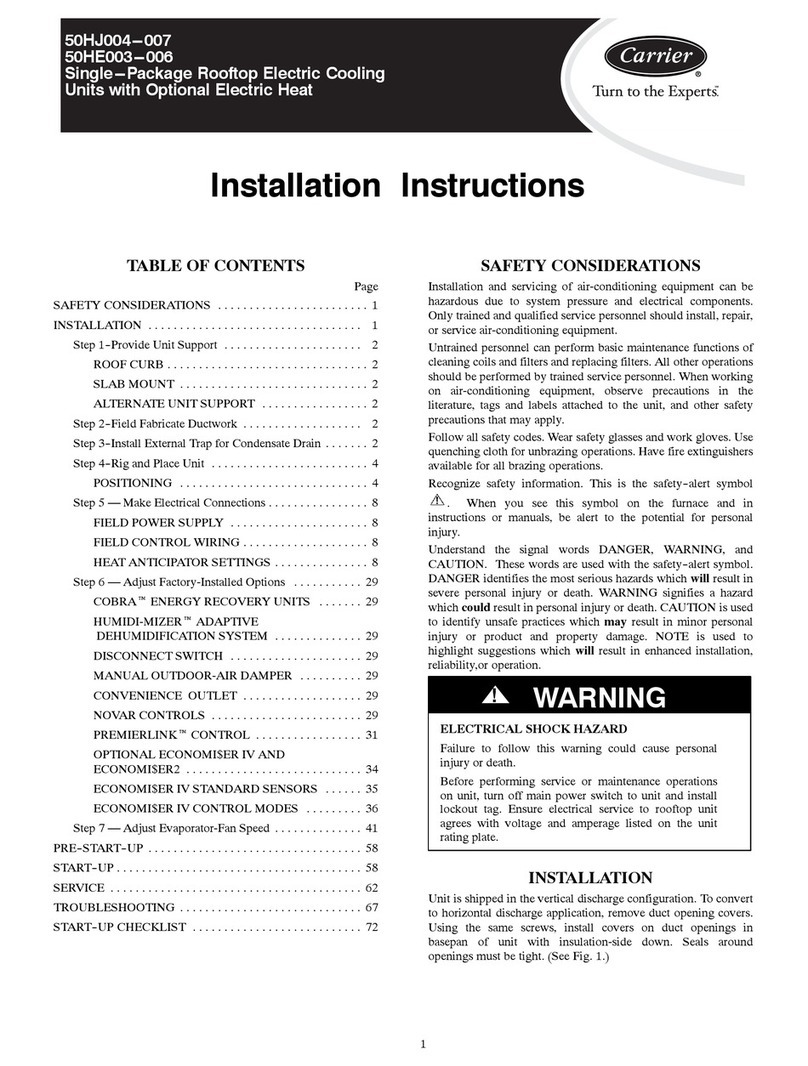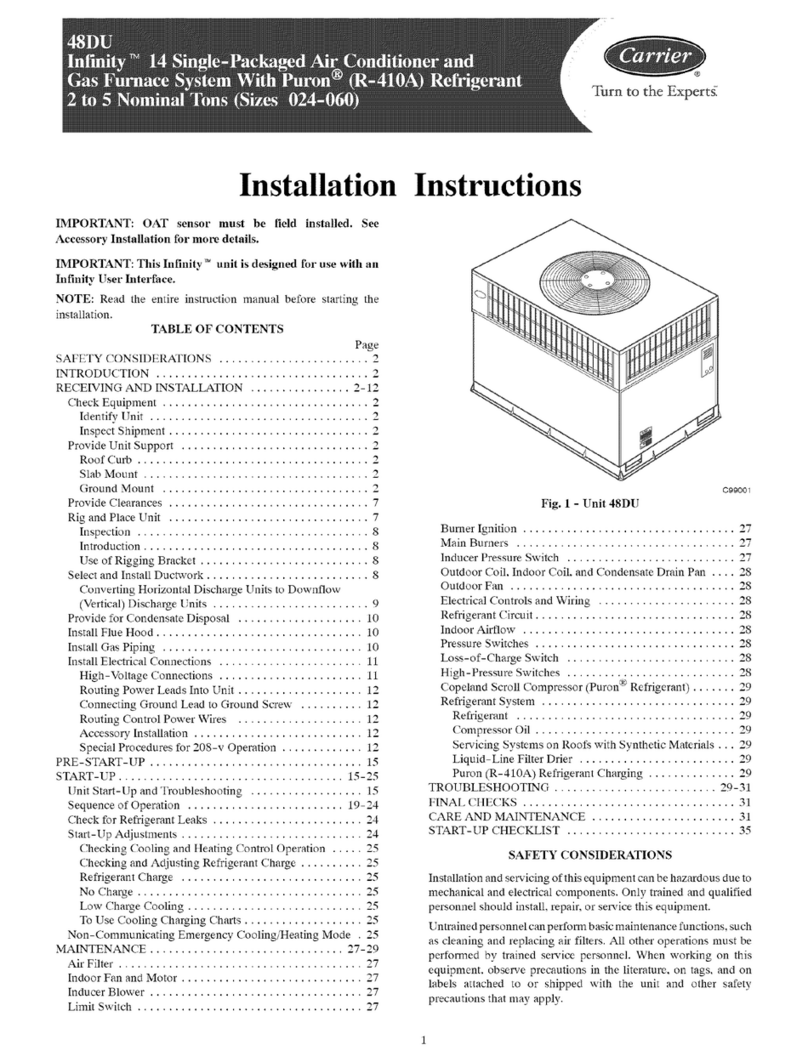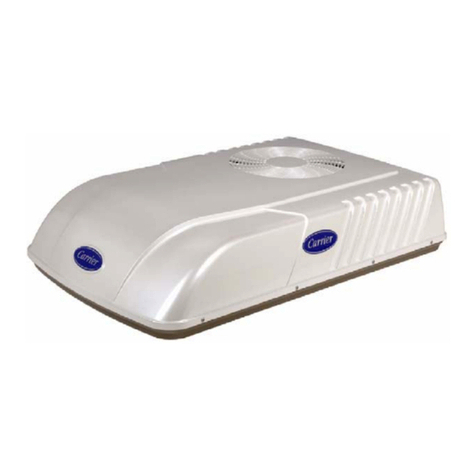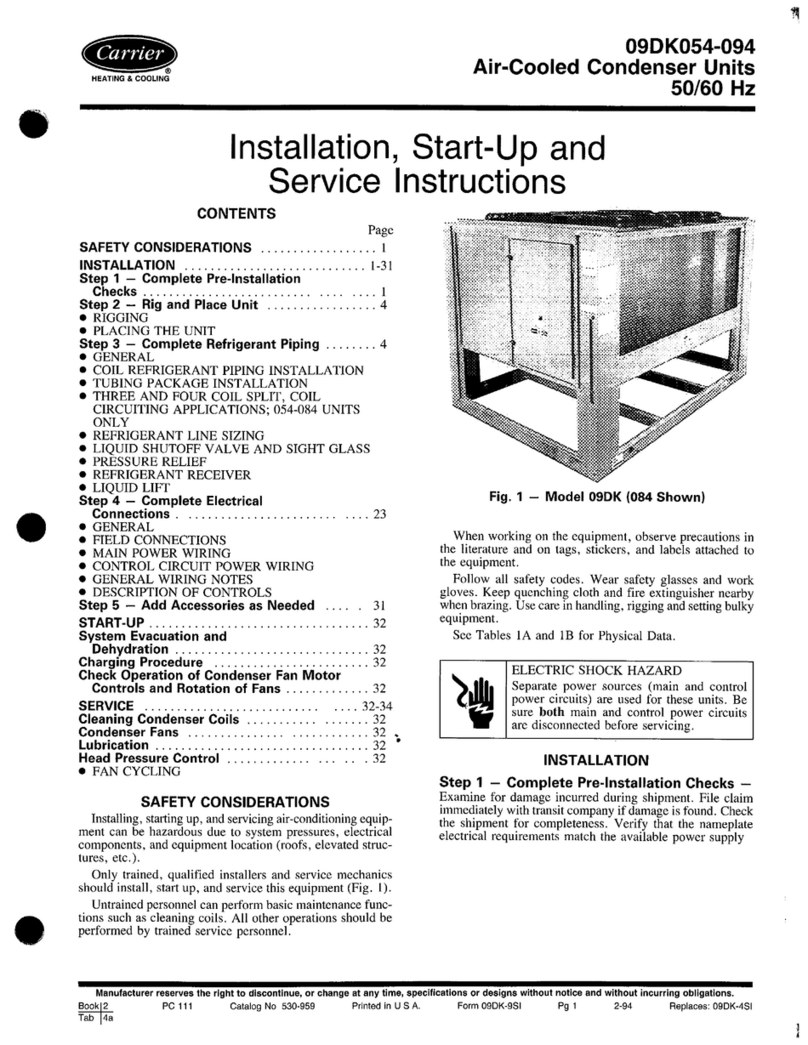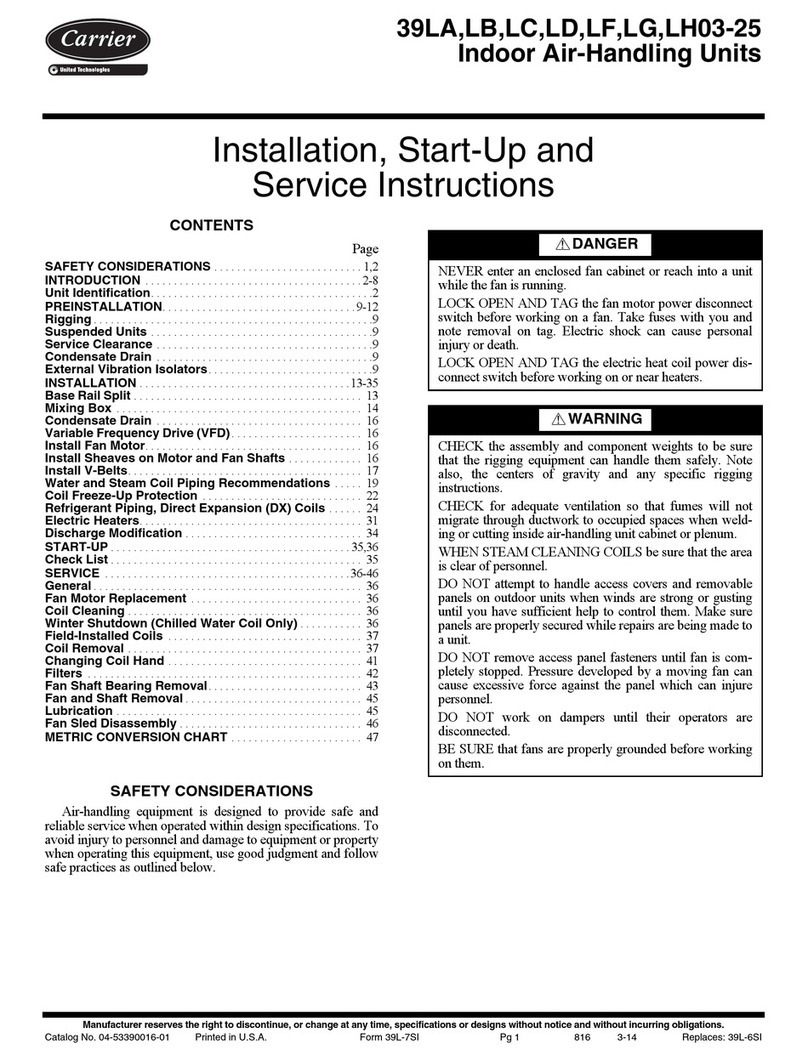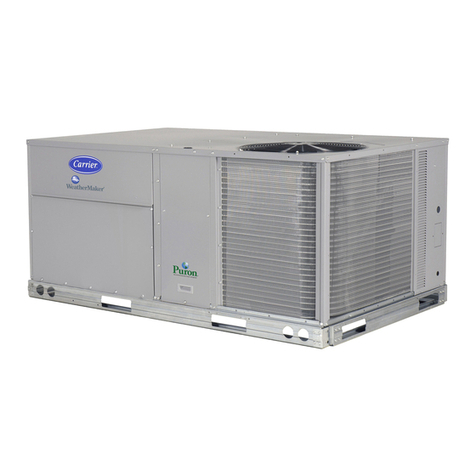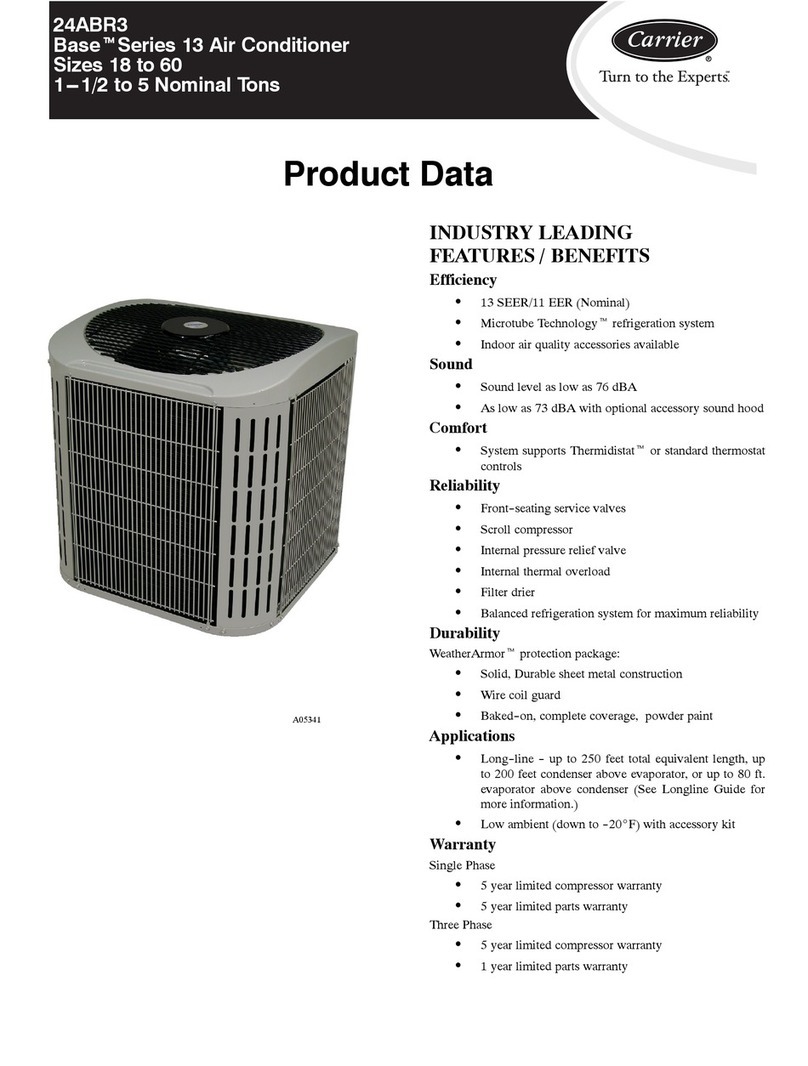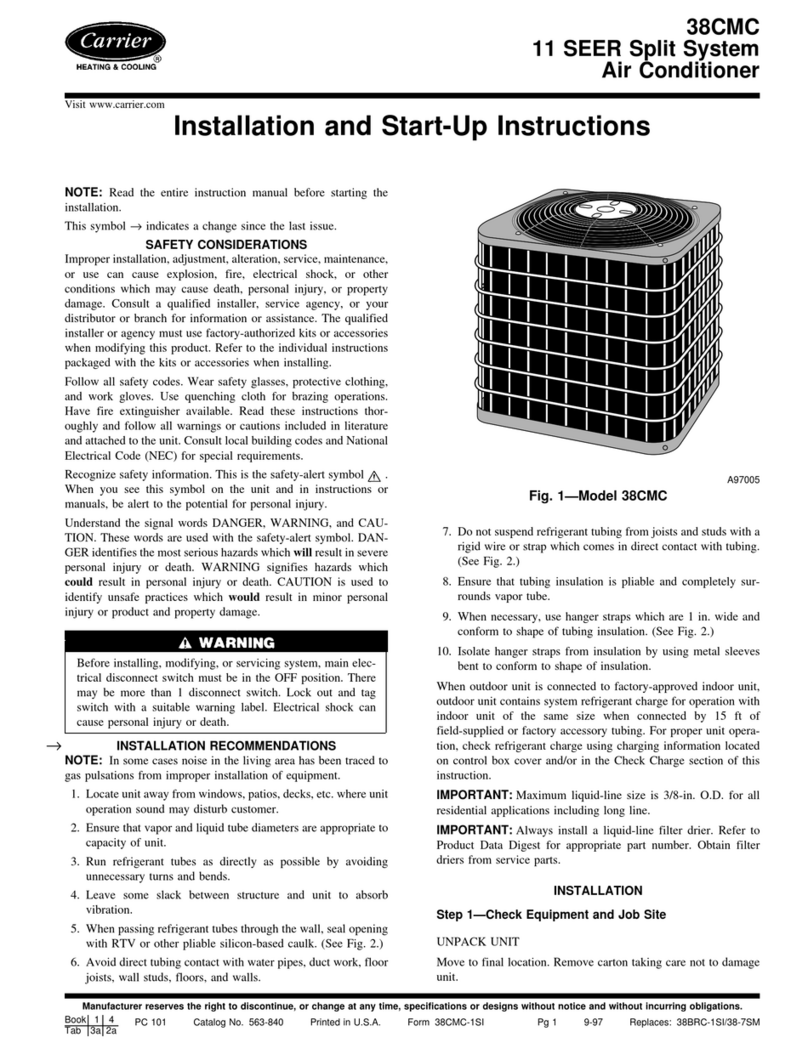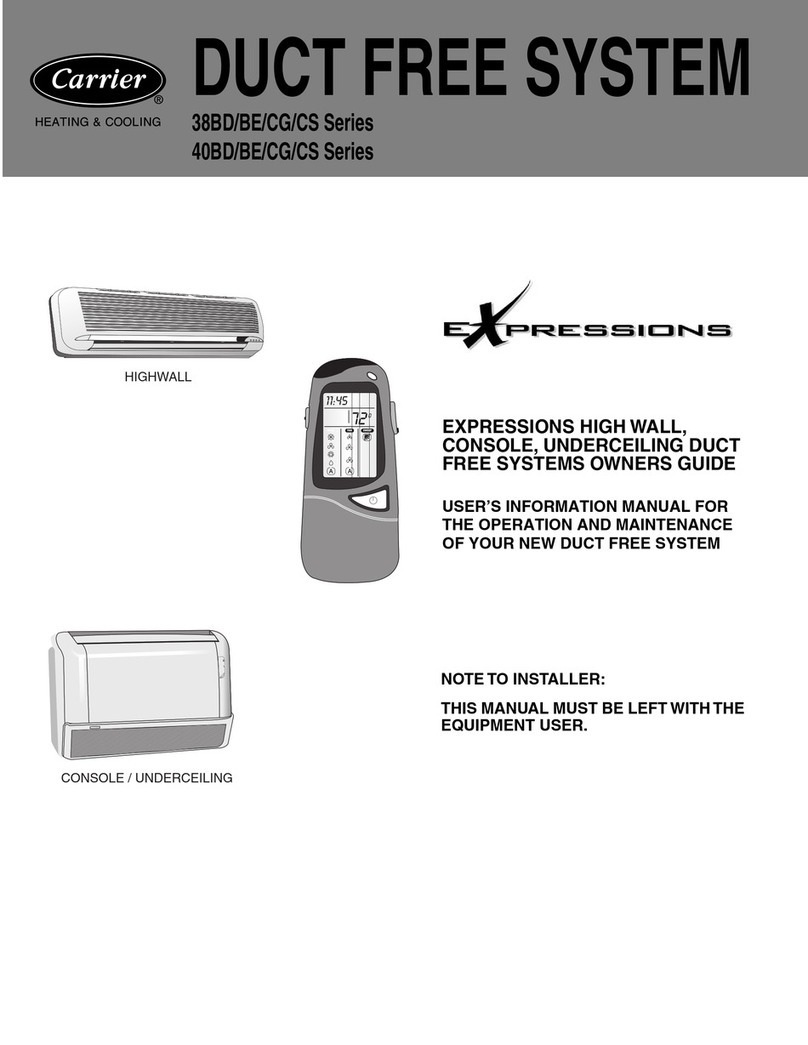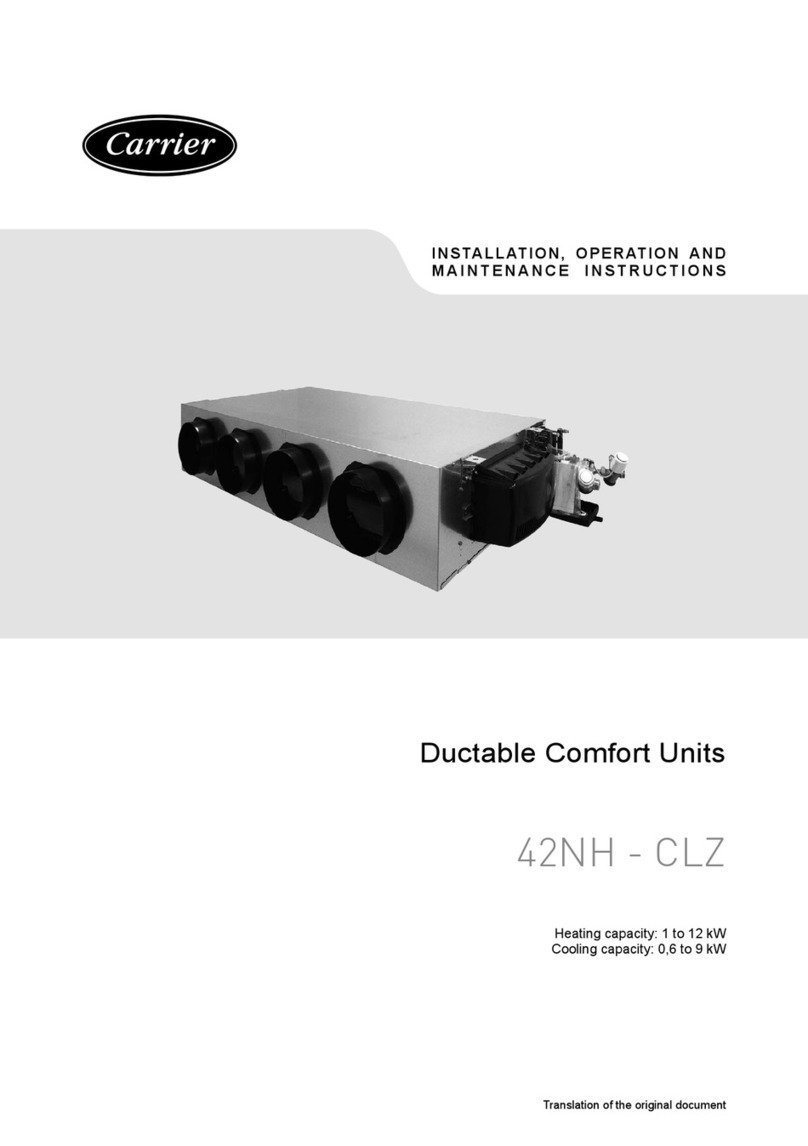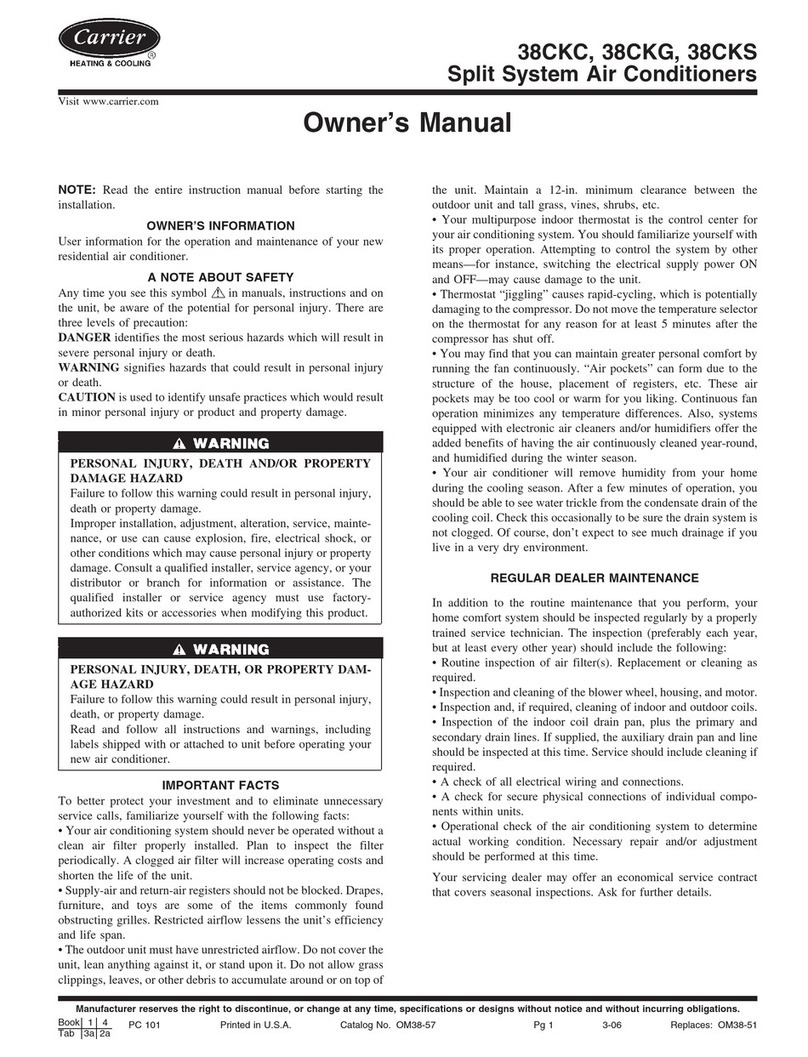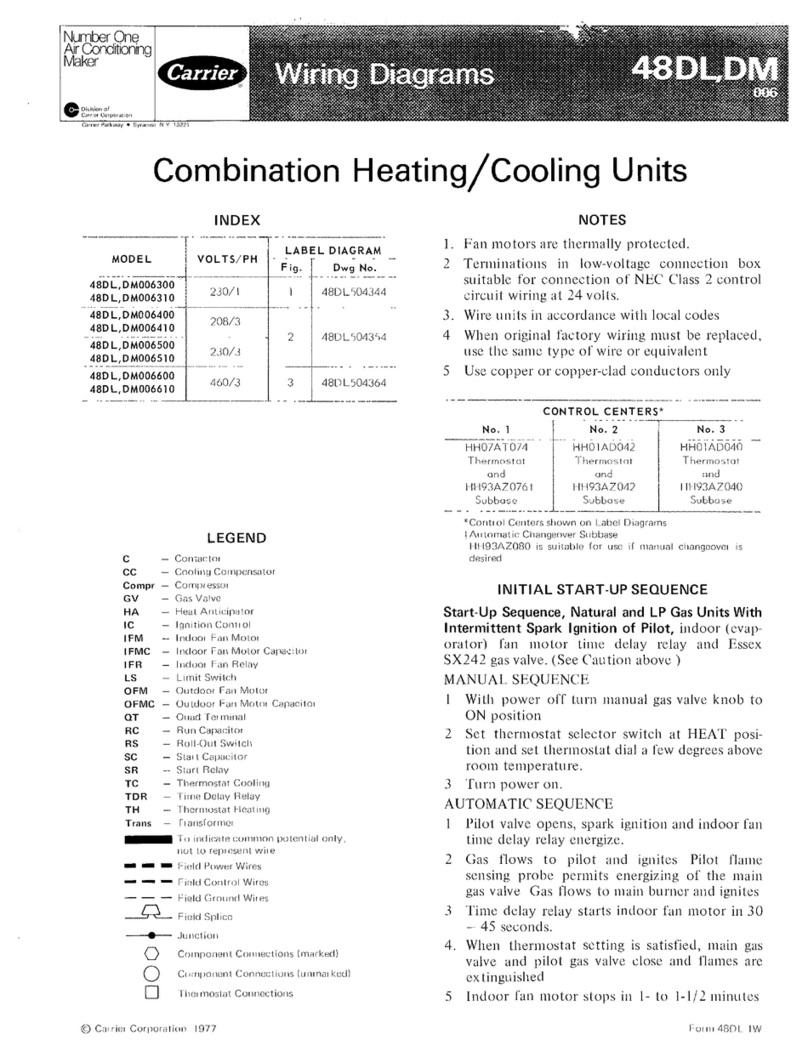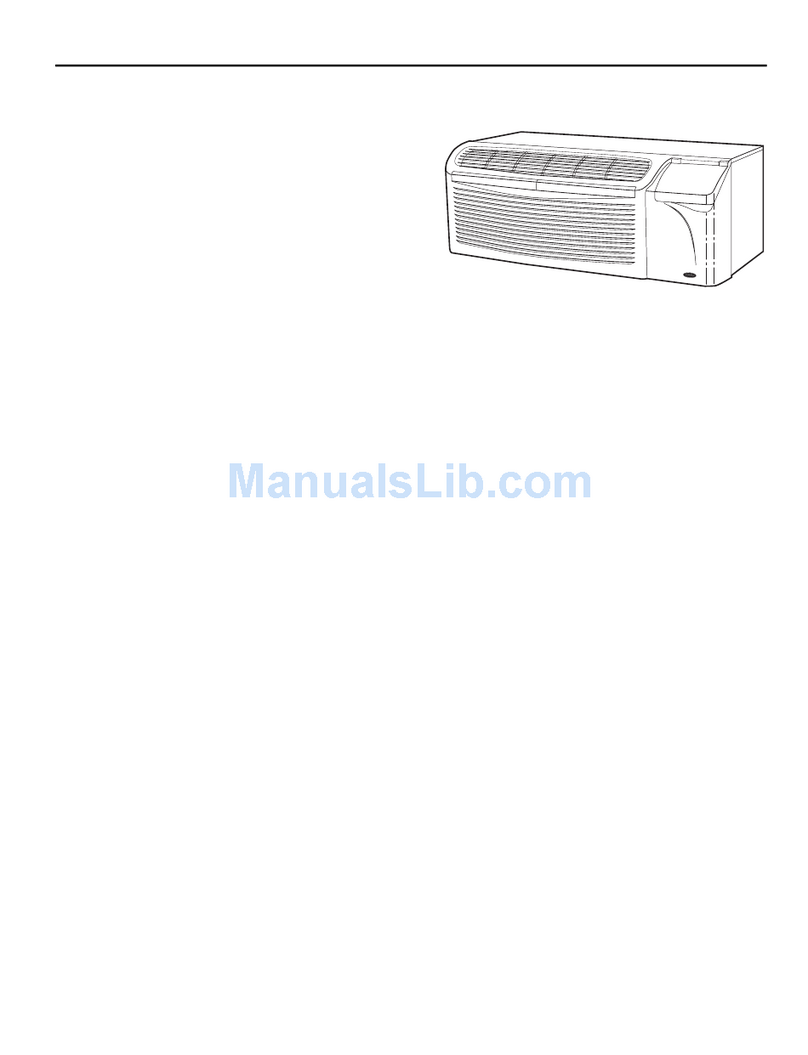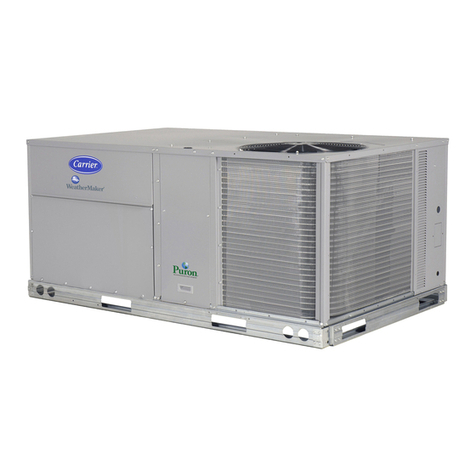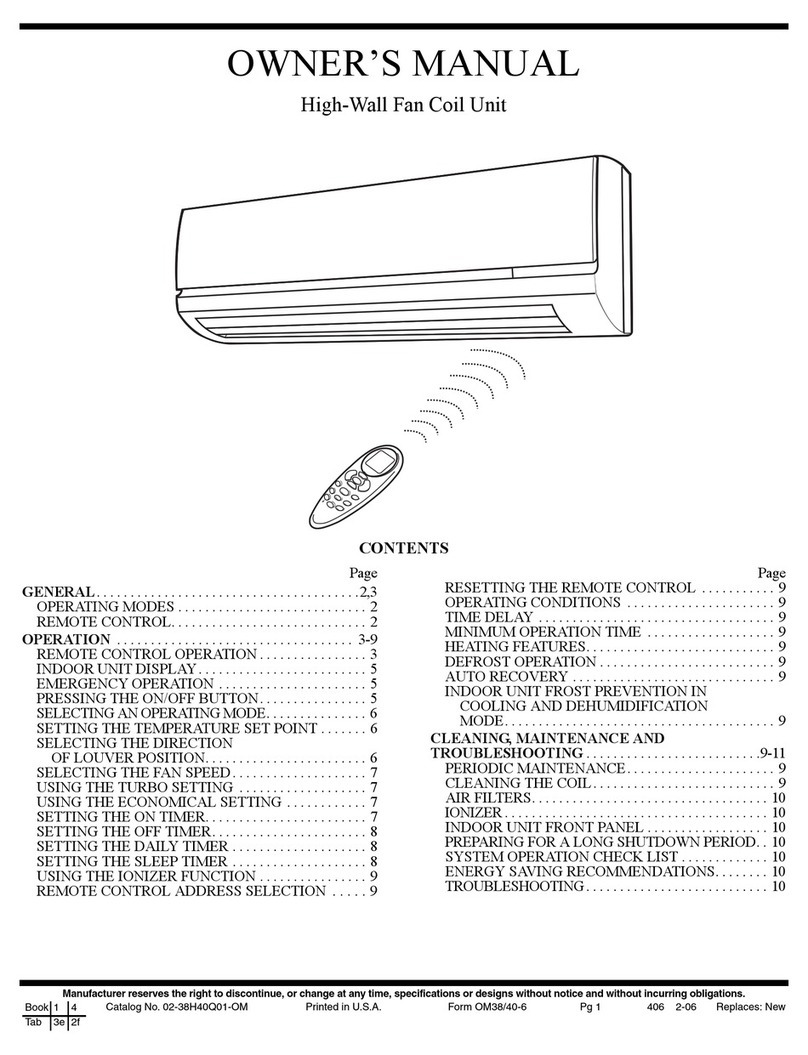
8Specifications subject to change without notice. CHS-072-121-01SI
INSTALLATION
Jobsite Survey
Complete the following checks before installation.
1. Consult local building codes and the NEC (National
Electrical Code) ANSI/NFPA 70 for special installa-
tion requirements.
2. Determine unit location (from project plans) or select
unit location.
3. Check for possible overhead obstructions which may
interfere with unit lifting or rigging.
Step 1 — Plan for Unit Location
Select a location for the unit and its support system (pad, rails
or other) that provides for the minimum clearances required
for safety. This includes the clearance to combustible surfac-
es, unit performance and service access below, around and
above unit as specified in unit drawings. See Fig. 3.
Select a unit mounting system that provides adequate
height to allow for removal and disposal of frost and ice that
will form during the heating-defrost mode.
NOTE: Consider also the effect of adjacent units on airflow
performance and control box safety clearance.
Do not install the outdoor unit in an area where fresh air
supply to the outdoor coil may be restricted or when recircu-
lation from the condenser fan discharge is possible. Do not
locate the unit in a well or next to high walls.
Evaluate the path and required line length for interconnect-
ing refrigeration piping, including vapor riser requirements
and liquid line lift; a heat pump system will have one of each
type in opposite modes. Relocate sections to minimize the
length of interconnecting tubing.
Although unit is weatherproof, avoid locations that permit
water from higher level runoff and overhangs to fall onto the
unit.
Fig. 3 — Service Clearance Dimensional Drawing
Step 2 — Complete Pre-Installation Checks
CHECK UNIT ELECTRIC CHARACTERISTIC
Confirm before installation of unit that voltage, amperage
and circuit protection requirements listed on unit data plate
agree with power supply provided.
UNCRATE UNIT
Remove unit packaging except for the top skid assembly,
which should be left in place until after the unit is rigged into
its final location.
INSPECT SHIPMENT
File a claim with shipping company if the shipment is dam-
aged or incomplete.
CONSIDER SYSTEM REQUIREMENTS
• Consult local building codes and National Electrical
Code (NEC, U.S.A.) for special installation require-
ments.
• Allow sufficient space for airflow clearance, wiring, re-
frigerant piping, and servicing unit. See Fig. 1 for unit
dimensions and weight distribution data.
• Locate the unit so that the outdoor coil (condenser)
airflow is unrestricted on all sides and above.
• The unit may be mounted on a level pad directly on
the base channels or mounted on raised pads at sup-
port points. See Tables 3 and 4 for unit operating
weights. See Fig. 1 for weight distribution based on
recommended support points.
NOTE: If vibration isolators are required for a particular
installation, use the data in Fig. 1 to make the proper
selection.
Step 3 — Prepare Unit Mounting Support
SLAB MOUNT
Provide a level concrete slab that extends a minimum of
6 in. (150 mm) beyond unit cabinet. Install a gravel apron in
front of condenser coil air inlet to prevent grass and foliage
from obstructing airflow.
Step 4 — Rig and Mount the Unit
RIGGING
These units are designed for overhead rigging. Refer to the
rigging label for preferred rigging method. Spreader bars are
not required if top crating is left on the unit. All panels must
be in place when rigging. As further protection for coil faces,
plywood sheets may be placed against the sides of the unit,
behind cables. Run cables to a central suspension point so
that the angle from the horizontal is not less than
45 degrees. Raise and set the unit down carefully.
If it is necessary to roll the unit into position, mount the unit
on longitudinal rails, using a minimum of 3 rollers. Apply
force to the rails, not the unit. If the unit is to be skidded into
position, place it on a large pad and drag it by the pad. Do
not apply any force to the unit.
Raise from above to lift the unit from the rails or pad when
unit is in its final position.
After the unit is in position, remove all shipping materials
and top crating.
Step 5 — Complete Refrigerant Piping
Connections
Refrigerant lines must be carefully designed and construct-
ed to ensure equipment reliability and efficiency. Line
length, pressure drop, compressor oil return, and vertical
separation are several of the design criteria that must be
evaluated. See Table 5.
IMPORTANT: DO NOT BURY REFRIGERATION LINES.
REAR:
Min 18" (457 mm)
required for service
RIGHT:
Min 18" (457 mm)
required for service
LEFT:
Min 18" (457 mm)
required for service
FRONT:
42” (1067 mm)
required for service
NOTE: Observe requirements for 39" (914 mm) operating
clearance on either Left or Rear coil opening.
IMPORTANT: Do not bury refrigerant piping underground.
IMPORTANT: A refrigerant receiver is not provided
with the unit. Do not install a receiver.
